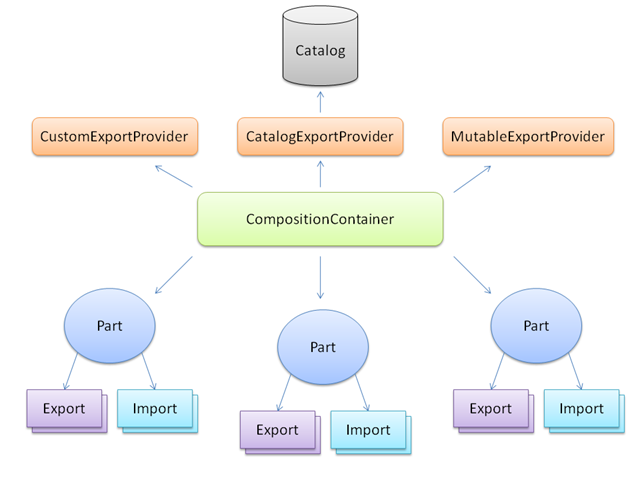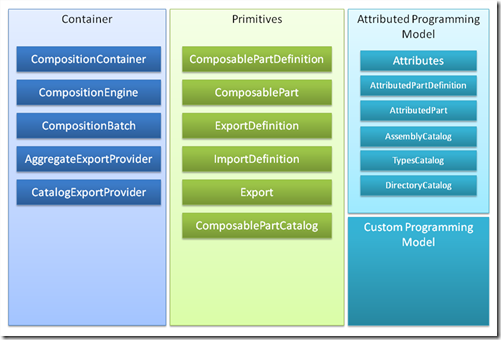
Hlavní menu
Nástroje |
Theoretical section1. IntroductionThe Managed Extensibility Framework (MEF) is a composition layer for .NET that improves the flexibility, maintainability and testability of large applications. MEF can be used for third-party plugin extensibility, or it can bring the benefits of a loosely-coupled plugin-like architecture to regular applications (MEF support a Plugin Model). There are two versions of MEF:
2. MEF modelRoughly speaking, MEF's core is comprised of a catalog and a CompositionContainer?. A catalog is responsible for discovering extensions and the container coordinates creation and satisfies dependencies.

3. MEF Examples1. Evil Wizard example - basic usage of MEF.
2. Catalogs example - more Catalog focused
3. Hello World example - External *Codeproject* site!
4. MEF ArchitectureMEF as seen on Fig. below, is divided into three main layers Container, Primitives and Attributed Programing Model. Each of these parts is described in Full MEF Architecture here. 
5. More about MEFAre you interested to know more about MEF (e.g. "MEF vs standard IoC Container", "MEF Visualizer", "Why to use MEF", "More learing materials" etc.) click here . 6. Literature
Practical sectionParking lot example writen in C# without using MEF ParkovistePlain. Implementation Attach:ParkingLot_Plain.zip Parking lot example writen in C# using MEF Dependency Injection ParkovisteMEF. Implementation Attach:ParkingLot_MEF.zip |